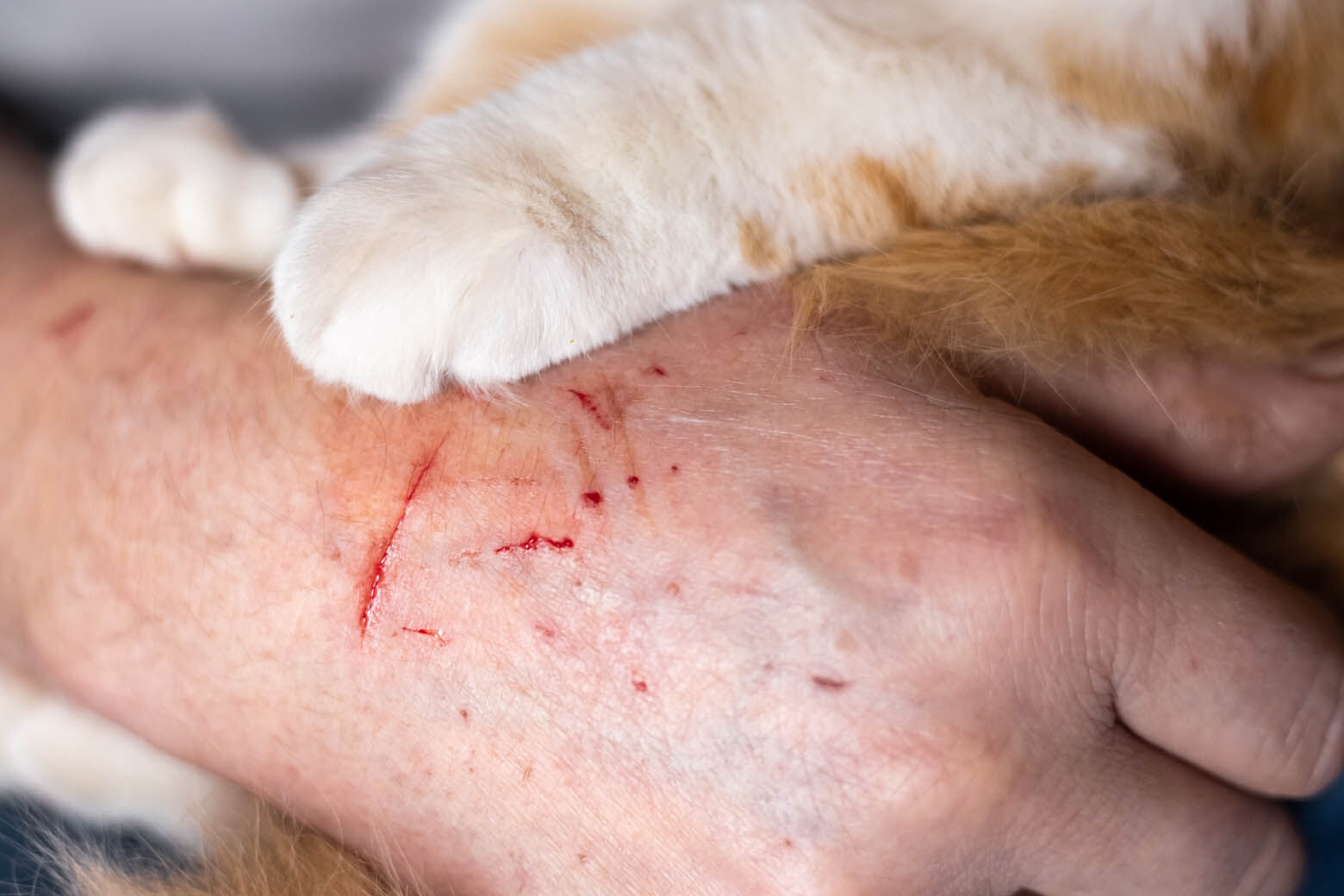Free Shipping On All Orders Over $150.
Cat Rabies Symptoms: Early Warning Signs and What to Do Next
Rabies in Cats is a serious concern for pet owners, as it has the potential to affect not only our furry friends but also humans. The rabies virus primarily spreads through the saliva of infected animals and can lead to severe neurological damage and ultimately death if left untreated. Being aware of Cat Rabies Symptoms and understanding the signs of rabies can help protect your beloved pets and your family. This article delves into various aspects of cat rabies, including early warning signs, immediate actions to take, and prevention tips that every cat owner should know.
What is Rabies?

Rabies is a viral disease caused by the rabies virus, which affects the central nervous system of mammals, including cats, dogs, and humans. The virus primarily spreads through bites or scratches from an infected animal, where the infected saliva enters the body. Rabies is often fatal, with a nearly 100% mortality rate once symptoms appear.
How Does Rabies Affect Cats?
The rabies virus has a profound impact on feline behavior and health. Once inside the body, the virus begins by replicating in muscle tissue before moving into the nervous system. It travels along nerve pathways until it reaches the brain, leading to the characteristic signs of the disease.
Cats infected with rabies may display behavioral changes, such as increased aggression, confusion, and disorientation. As the disease progresses, these changes can become more severe, leading to paralysis and ultimately death.
The Importance of Early Detection
Early detection of rabies in cats is crucial for several reasons. If you suspect your cat has been exposed to the virus, immediate veterinary intervention can be life-saving. Additionally, recognizing the early warning signs allows for better management of your pet's health and safety.
Can Kittens Get Rabies?

Yes, kittens are susceptible to rabies just like adult cats. In fact, any mammal can contract the virus if they are bitten or scratched by an infected animal. It's essential to understand that the risk factors vary depending on the kitten’s environment.
Stray Kittens vs. Indoor Kittens
Stray kittens, especially those living outdoors or in rural areas, face a higher risk of exposure to potentially rabid animals, such as bats, raccoons, or foxes. On the other hand, indoor kittens have a lower risk of encountering these threats. However, it's important to ensure that all kittens receive their vaccinations on time, regardless of lifestyle.
Recognizing Vulnerability in Kittens
Kittens are particularly vulnerable to rabies if they lack proper vaccination. Many new pet owners might not realize that vaccinations are essential even for indoor kittens. Ensuring that your kitten receives its rabies vaccine can significantly reduce its chances of contracting this deadly virus.
Diagnosing Rabies in Cats

Diagnosing rabies in cats can be challenging due to the lack of definitive tests during the initial stages of the disease. Most diagnoses occur post-mortem, making it critical for cat owners to recognize possible symptoms early on.
Common Symptoms to Watch For
Some common cat rabies symptoms include:
- Behavioral changes: Aggression, fearfulness, or withdrawal.
- Physical signs: Lack of coordination, difficulty swallowing, and excessive drooling.
- Seizures or paralysis: These are often seen in the late stages of the disease.
If you observe any unusual behavior in your cat, consult your veterinarian immediately for assessment.
Testing Methods
While there is no specific blood test for rabies, veterinarians may utilize indirect fluorescent antibody tests on brain tissue to confirm rabies postmortem. For live animals, the emphasis remains on observing clinical symptoms and assessing the history of exposure to potentially rabid animals.
Is There a Cure for Rabies in Cats?

Unfortunately, there is no cure for rabies in cats once symptoms manifest. The best approach is preventive care through vaccinations.
Understanding the Consequences
Once a cat shows signs of rabies, the prognosis is grim, and euthanasia is often recommended to prevent further suffering. This emphasizes the importance of keeping your pet's vaccinations up to date.
Steps to Take When Suspecting Rabies
If you suspect your cat has rabies, isolate them immediately to prevent transmission to other animals or humans. Contact your veterinarian for guidance on the next steps, which may include observation or euthanasia based on the severity of the situation.
How Long Can an Infected Cat Live After Contracting Rabies?

The incubation period for rabies varies widely, typically ranging from several weeks to months. However, once symptoms appear, the progression of the disease is rapid.
Stages of Rabies Progression
An infected cat will generally experience three stages of the disease:
- Incubation Stage: During this phase, the cat does not show any symptoms but can be contagious.
- Furious Stage: This stage includes extreme behavioral changes, such as aggression, restlessness, and hallucinations.
- Paralytic Stage: Eventually, the cat becomes paralyzed, loses the ability to swallow, and experiences respiratory failure.
Understanding these stages can help in identifying rabies early and taking appropriate action.
Finality of Rabies Infection
Once the furious and paralytic stages manifest, a cat usually dies within days. This highlights the urgency of seeking veterinary help at the first sign of abnormal behavior.
The Mechanism of Rabies Virus
:max_bytes(150000):strip_icc()/cat_scratching-3a1590ba23ea4acea7af65fd2bd5c8fe.jpg)
The rabies virus operates by targeting the nervous system. After entering the body through bites or scratches, it moves quickly through nerve cells to reach the brain.
Pathway of Infection
Initially, the virus infects muscle tissues before spreading to peripheral nerves. This stage can last for weeks to months without symptoms. Once the virus reaches the central nervous system, the symptoms begin to manifest rapidly.
Symptoms Manifestation
As the virus damages the nervous system, symptoms can escalate from minor behavioral changes to severe distress. This rapid progression underscores the importance of awareness and quick action.
Do Scratches and Bites from Cats Transmit Rabies?

Yes, both scratches and bites can transmit the rabies virus. If a cat is rabid, any contact between its saliva and a human’s open wound can result in infection.
Understanding Cat Scratches
Cat scratches may seem harmless, but if the cat is infected with rabies, the risk of transmission exists. The injury site can become infected, and it is vital to monitor any scratch closely.
Actions to Take If Scratched
If you get scratched by a cat, wash the area thoroughly with soap and water immediately. Observe the cat for any abnormal behaviors, and contact a healthcare professional for advice. Prompt medical attention can be critical in preventing the onset of rabies.
What to Do If You Are Bitten by a Rabid Cat

Being bitten by a potentially rabid cat requires swift action. Here are key steps to follow:
Immediate First Aid Steps
- Clean the Wound: Rinse the bite area under running water to remove any saliva and bacteria. Clean with soap and apply antiseptic.
- Seek Medical Attention: Visit a healthcare provider as soon as possible for evaluation and potential rabies post-exposure prophylaxis.
- Report the Incident: Notify local health authorities and animal control about the incident to assess the cat and determine if it is rabid.
Understanding Post-Exposure Prophylaxis
Post-exposure prophylaxis involves administering a rabies vaccine and immunoglobulin to prevent the infection from taking hold. This treatment is highly effective and can save lives if initiated promptly.
Euthanizing a Rabid Cat

Euthanizing a rabid cat is a necessary measure to prevent suffering and further transmission of the virus.
The Decision Process
Making the decision to euthanize an infected cat is never easy. It often depends on the severity of symptoms and the potential risk to other animals and humans. Consult with a veterinarian to discuss the most humane option for your pet.
Compassionate Considerations
While the decision may be difficult, keeping the welfare of your animal and the community in mind is paramount. A compassionate approach ensures the cat does not suffer unnecessarily while protecting others from potential exposure.
Preventive Measures Against Cat Rabies

Preventing rabies is far more effective than treating it after it occurs. Here are several strategies to keep your furry friends safe.
Annual Vaccination
Regular vaccinations against rabies are crucial for all cats, regardless of their living environment. Consult your vet for a vaccination schedule and adhere to it diligently.
Awareness and Education
Educate yourself about the risks associated with rabies, especially if you live in areas where wild animals are prevalent. Familiarize yourself with signs of rabies so you can act promptly if necessary.
Quarantine and Isolation
If you find a stray cat or encounter a wild animal, practice caution. Isolate any suspected rabid animals and report them to local authorities for assistance.
Conclusion

Understanding Rabies in Cats is vital for any pet owner. By recognizing signs of rabies, knowing how to respond to suspicious behavior, and implementing prevention strategies, we can protect our pets and ourselves from this deadly disease. Always prioritize regular veterinary check-ups and vaccinations as fundamental practices in safeguarding the health of your furry companions. Remember, knowledge is power; staying informed about rabies can save lives!
0 comment
Be the first to comment